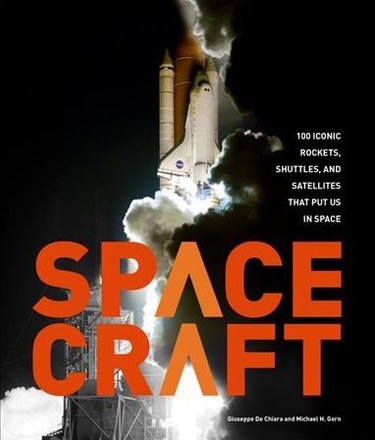Review: Spacecraftby Jeff Foust
|
| One illustration puts SpaceX’s family of vehicles, from the original Falcon 1 to the Falcon Heavy, on the same page and at the same scale, demonstrating how those vehicles have grown over time. |
De Chiara, whose art has been featured in a number of articles in this publication (see, as examples, “The measure of a man: Evaluating the role of astronauts in the Manned Orbiting Laboratory program (part 1)”, March 19, 2018, and “Adapter in the rough”, January 30, 2017), provides most of the art in Spacecraft in the form of illustrations of launch vehicles and spacecraft, augmented by some photographs. The artwork is complemented by Gorn’s text offering brief summaries—usually no more than a page or two—of the vehicles.
Those illustrations are useful in a variety of ways. Some are cutaways showing the interior designs and structures of these vehicles. Others are family portraits of sorts, illustrating the evolution of vehicles, like Apollo and the shuttle. One late in the book puts SpaceX’s family of vehicles, from the original Falcon 1 to the Falcon Heavy, on the same page and at the same scale, demonstrating how those vehicles have grown over time.
Those illustrations improve what might otherwise be an average book. For those already familiar with the history of spaceflight, there’s not much in the way of new information about the vehicles included. The book is divided into three sections, each covering a two-decade span in the history of spaceflight, although within each section the coverage can skip around (Mir is discussed before Salyuts 6 and 7, for example.) The book focuses on spacecraft “designed for illumination rather than for tangible results,” as the introduction states, so there’s little in the way of commercial vehicles in the book, although besides the predominantly commercial Falcon rockets listed above there are also commercial suborbital vehicles like SpaceShipOne, SpaceShipTwo, and New Shepard.
There’s also the occasional missed opportunity to more closely tie the illustrations with the text. Some of the illustrations of the evolution of vehicle designs will include variants never developed or flown, like one for the shuttle that includes Shuttle C and LaRC Shuttle II. Those concepts, though, are often not discussed in the text of the book, creating a disconnect.
Nonetheless, Spacecraft is still an interesting book capturing the development of rockets and spacecraft over the history of spaceflight. If a picture is worth a thousand words, a good illustration can be worth even more.
Note: we are temporarily moderating all comments subcommitted to deal with a surge in spam.
